#Harold Washington Library Center
Text

Prowly thinks this book is an instruction manual and he is interested in learning.
[ID: Prowly the Halloween Owl is sitting on a shelf at the Harold Washington Library Center; he is seated in amongst volumes on publishing and bookbinding. Directly behind him are three copies of The Map Thief, a book about a rare map dealer who made a fortune selling stolen goods.]
86 notes
·
View notes
Photo
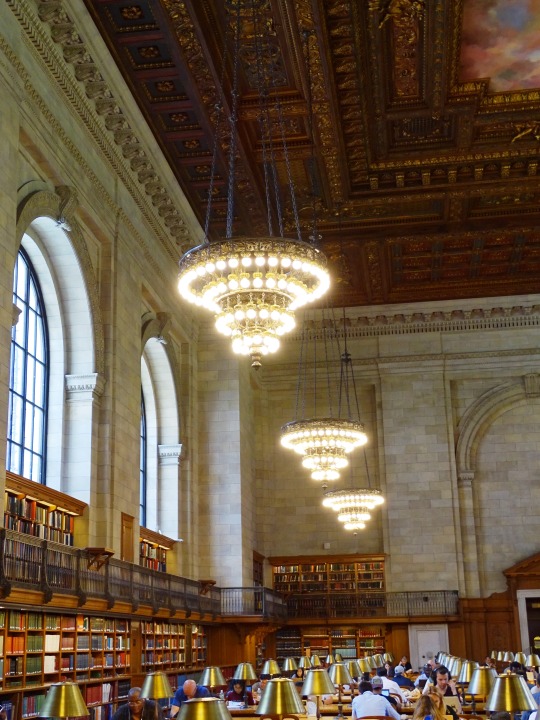
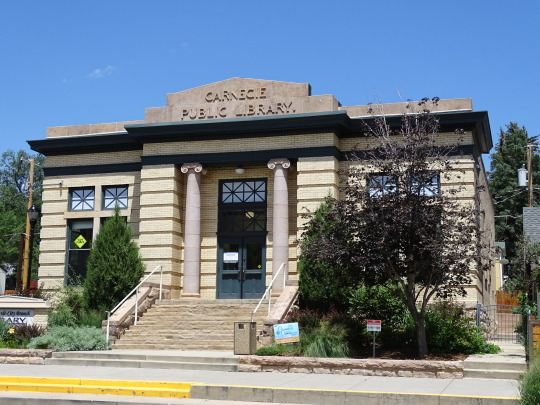
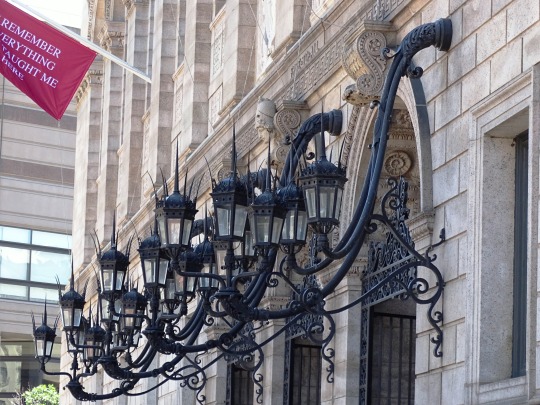
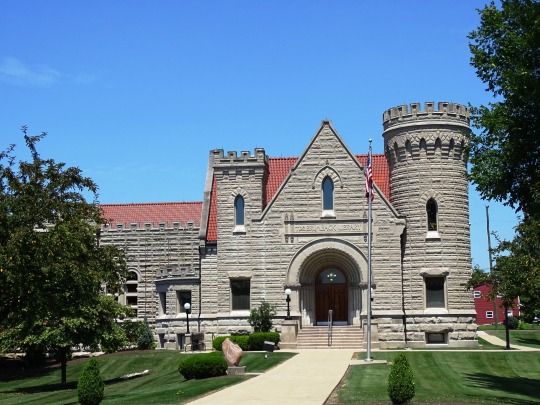
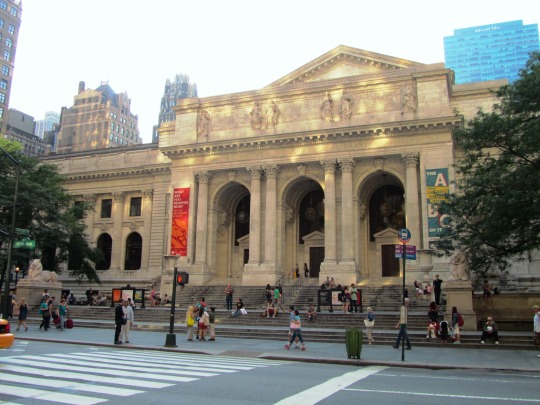
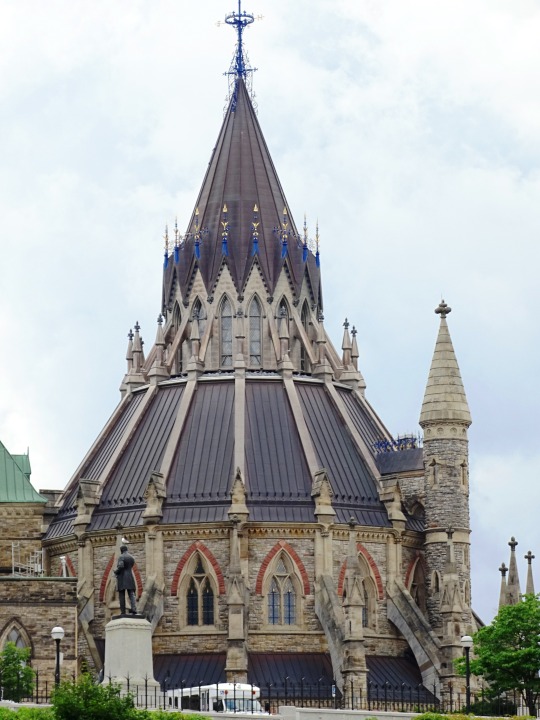


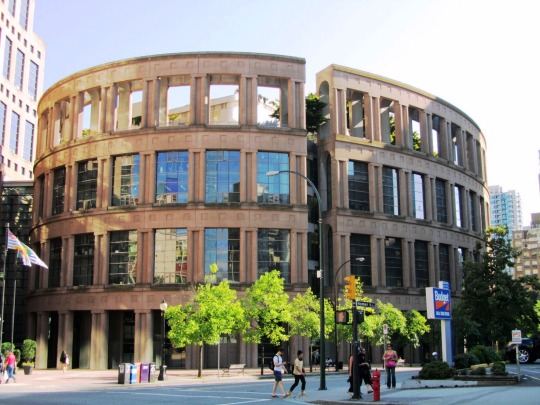

Bibliomania Day
Stephen Blumberg loved books. It has been written that “it was his habit to read constantly through the night, cat-napping, walking, reading, dozing, waking, reading again, never fully sleeping.” Stephen Blumberg didn’t just love books, he was a bibliomaniac. Bibliomania is when someone has a strong love of books, where they collect them to the point of hoarding, and social relations and health may suffer. Symptoms may include acquiring more books than would be useful for any reason or getting many copies of the same book. The term was coined by John Ferriar, who published a poem in 1809 with the word as its title, for his friend Richard Heber, who had the condition. The term became used to describe obsessive book collectors. That same year, Reverend Thomas Frognall Dibdin published Bibliomania; or Book Madness. Bibliomania is different from bibliophilia, which is a healthy form of love for books.
On March 20, 1990, Stephen Blumberg’s bibliomania caught up with him. He was arrested for stealing more than 23,600 books (weighing 19 tons) from 268 libraries, universities, and museums. It had taken him over 20 years to steal them, and he got them from 45 states, Washington D.C., and Canada. After originally being thought to be valued at around $20 million, the value of the books was estimated at $5.3 million. He is known as the number one book thief in American history and became known as the Book Bandit. The books he stole, which included a first edition of Uncle Tom’s Cabin among other rare books, became known as the “Blumberg Collection.”
An acquaintance of Blumberg, Kenneth J. Rhodes, turned him in for a $56,000 reward. During Blumberg’s trial, a psychiatric doctor let it be known that Blumberg had gone through psychiatric treatment as an adolescent. The defense claimed that Blumberg had stolen the books because of psychiatric issues beyond his control. According to the defense, Blumberg had thought he was saving the books from destruction by stealing them. He thought that the government was trying to keep them so that everyday people wouldn’t have them, and he thought he was acting as custodian of the books and doing something good. Because he was well-intentioned, he said he would have never sold any of the books for a profit, and hoped they would go to another person who would take good care of them after he was gone. Nonetheless, he was sentenced to 71 months in prison and given a $200,000 fine, and insanity or psychology wasn’t factored into the decision. He was released on December 29, 1995, and has since been arrested for burglary multiple times.
On Bibliomania Day, we remember Stephen Blumberg and his remarkable feat of stealing over 23,600 books. Could you buy, steal, or gather together that many books? Probably not, but you aren’t the world’s most famous bibliomaniac. Perhaps on Bibliomania Day, you could at least try.
How to Observe
Celebrate the day by getting as many books as possible. It’s probably best not to steal them as Stephen Blumberg did, but that’s a decision you will have to make for yourself. You could start by getting some books about bibliomaniacs, such as A Gentle Madness: Bibliophiles, Bibliomanes, and the Eternal Passion for Books or The Man Who Loved Books Too Much: The True Story of a Thief, a Detective, and a World of Literary Obsession. After that your options are limitless. As bibliomaniacs tend to collect any and all books, regardless of their value, you could just start trying to gather up any books you can find. But maybe it’s best to start by getting some of the best fiction or non-fiction books of all time.
Source
#Brumback Library#Van Wert#Rose Main Reading Room#Midtown Manhattan#New York City#Stephen A. Schwarzman Building#Library of Parliament#USA#Ottawa#Old Colorado City Branch Carnegie Library#Colorado Springs#Boston Public Library#McKim Building#Adams County Public Library#Gettysburg#Harold Washington Library Center#Chicago#Canada#Vancouver Public Library#Bibliomania Day#20 March#BibliomaniaDay#architecture#cityscape#original photography
4 notes
·
View notes
Text

Installation replicating the dog tags of 58,307 US soldiers killed during the Vietnam war, The Harold Washington Library Center.
1 note
·
View note
Text

Date: December 15, 1998
Greetings once again, truth-tellers. I wanted to share with you one such clipping I had found from the February 29th edition of The Beacon-News. This particular excerpt was located within the Harold Washington Library Center's print archive. You can imagine my shock when I first saw C.S. so clearly identifiable.
I'm still hard at work trying to pick up loose ends and hope to provide further insight into the investigation. Until then, stay curious dear readers!
Skeptically yours,
Valorie Chase
#blog#buried under the columns#chicago#chicago reality now#mystery#debunking#Windy City Eye#Valorie Chase#C.S.#Beaon-Times
0 notes
Text
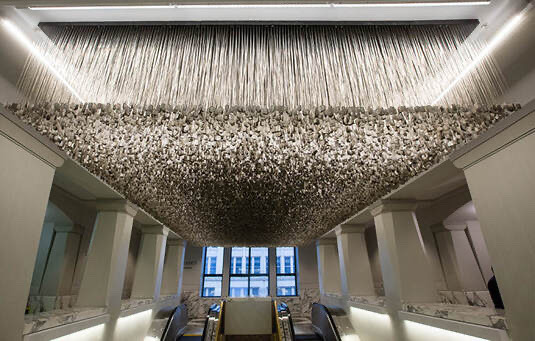
Above and Beyond comprises 58,307 dog tags. Each dog tag represents a person in the Vietnam War and is arranged in date order of death. And, each dog tag shows their name, casualty date, and military branch.
Above and Beyond was commissioned by the National Veterans Art Museum and created by artist Rick Steinbock, and veteran artists Ned Broderick, Joe Fornelli and Mike Helbing. It was originally installed at 1801 S. Indiana Ave. on May 26, 2001 to coincide with Chicago’s Memorial Day parade. Above and Beyond was created over a 2-year period as each dog tag was stamped by hand using a former military Graphotype machine.
Above and Beyond is the only memorial other than The Wall in Washington, D.C. to list all those killed in action during the Vietnam War. Additionally, it includes one black dog tag. This serves to remind us of those who died from conditions related to service during the Vietnam War.
Above and Beyond is part of the National Veterans Art Museum Collection, and is on extended exhibition at the Harold Washington Library Center--400 S. State St., Chicago, IL
1 note
·
View note
Video
youtube
Blackie · Roy Kinsey
Chicago born and raised, Roy Kinsey is a bit of an anomaly when it comes to tradition in his respective industries. where being a black, queer-identified, rapper, and librarian may be an intimidating choice for some, Roy Kinsey’s non-conformist ideology has informed his 6th album, and self proclaimed, “best work yet,” Kinsey: A Memoir. KINSEY: A Memoir, arguably more poignant than Blackie: A Story by Roy Kinsey, captures a dark, sinister, yet sincere, and potent musical performance by Kinsey. Kinsey’s observations are strong on ‘Memoir,’; shaped by early traumas that threatened to debilitate his belief in himself as well as the abilities of his family. It is the manifestation of a queer man, in a black body, coming of age in Chicago.”
Featured on the cover of major local publications like, Chicago Reader and the Chicago Tribune, in and on major national, and international publications like Billboard, LA Times, NPR, WBEZ’s Vocalo, WGCI and the RedEye, his “deft skill for storytelling,” is proving to solidify him and his contributions in the cannon of black music and literature. Kinsey’s video BSAYF (B****, She Ain’t You Friend), exploring black queer identity and spirituality, premiered at the Museum of Contemporary Art (MCA), the Art Institute of Chicago, the Harold Washington Cultural Center and the Dusable Museum. Kinsey has shared his lyrics on the stages of the legendary First Avenue in Minnesota, Thalia Hall, Soho House, Lincoln Hall, Logan Square Auditorium, Schuba’s, and Empty Bottle, and has recently done a series of performances/exhibitions with the Chicago Public Library’s seasonal book and theme programming of race and music, One Book, One Chicago.
His professional development in librarianship has fueled his desire for self examination and then reporting his findings, in rhyme. He intends and believes the success of his present and future creative works will touch the hearts of many because it comes from the heart.
Roy Kinsey is a librarian for Chicago Public Libraries.
0 notes
Text
bughouse [buhg-hous]
noun, (slang)
an insane asylum.
"Bughouse Square" didn't start out as a gathering place for "kooks". It was a cow path with a well that farmers used to water cattle. Now its a cool little piece of serenity not too far from busy Michigan ave and Rush street.
In 1842 , the owners of the three acre parcel donated it for use as a park. Located across Walton Street from Newberry Library at 901 N. Clark Street in the Near North Side of Chicago.
They stipulated that it be called Washington Square Park, one of four present day Chicago parks that use the surname Washington. (the others being Washington Park, Harold Washington Park, and Dinah Washington Park) It is Chicago's oldest existing small park (renovated a few times) and a registered historic landmark.
By the 1890's, it had bisecting diagonal walks, limestone coping, picket fencing, and a Victorian fountain in the center. Perfect for "soapboxing", a flamboyant art form used metaphorically today but in the 1890's, public oration required an actual wooden box to stand on. It was around this time that it became known as "Bughouse Square".
A good soapboxer was quick on his feet as well as with his wit, to escape angry crowds and put down hecklers as they often gave provocative speeches on religious or political themes.
A speaker named One-Armed Cholly Wendorf would raise the stub of his right arm and declare "You know where the rest of this is? Somewhere in France. Somewhere in a trench. … Cholly Wendorf's arm is enrichin' the soil that grows the grapes that bring you the best Cognac money can buy."
A good soapboxer after all, also knew how to get the crowd on his side.
Speakers with moniker's like “Cosmic Kid,” Ben “the clap doctor” Reitman, the Sheridan twins (Jack and Jimmy) came to soapbox but people such as Carl Sandburg, Upton Sinclair, Edgar Lee Masters, Clarence Darrow, Emma Goldman, Lucy Parsons and Theodore Dreiser also spoke there.
It was known as a center for free speech, rivaling such oratory landmarks like Hyde Park in London. Artists, writers, radicals, and hobos pontificated, lectured, recited poetry, ranted, and raved much like they do on Facebook today, then they would go to the Dil Pickle. A bohemian club owned by Wobbly John "Jack" Jones, about a block away where they would listen to jazz, recite poetry, rant and rave some more and maybe put on a play while imbibing a drink or two. The club had an orange alley door and a sign that read “DANGER” and two arrows pointing to the club’s entrance with the warning “Step High, Stoop Low, Leave Your Dignity Outside.” It closed in 1933.
"Bughouse Square" had its heyday between the 1920's until the mid 60's.
It had been a major tourist attraction starting in the 20's with thousands of people coming by the busload.
Nowadays, the Newberry Library hosts the "Bughouse Square" debates in July, a celebration of First Amendment rights. They encourage speakers and hecklers alike to join in and speak their mind about issues of the day. They also do reenactment speeches by famous Chicagoans as well and have open mic poetry, music and food.
There is also a memorial tablet which declares the park as "Chicago's Premier Free Speech Forum."
Bring a thick skin.

0 notes
Text
I’ve been chosen to exhibit my artwork at the Chicago Public Library during May in celebration of Asian American and Pacific Islander Heritage Month! I’ll be exhibiting at the Harold Washington Library Center—the massive main library downtown on State Street! Thank you, CPL! In 2018, I was at the West Chicago Avenue Branch in Austin; in 2019, I was at the Coleman Branch in Woodlawn; and in 2020, I was going to show in Logan Square, but it was cancelled when COVID hit. This year, my exhibit will essentially be a photographic love letter to Chicago, featuring photographs I’ve taken around our wonderful city throughout the past decade—a fitting display, since (unbeknownst to me when I dreamt up the idea) CPL happens to be celebrating its 150th anniversary! Super stoked for spring.
#photographer#libraries#library#public library#community#chicago#culture#heritage#aapi#asian american#chinese#chinese american#art#artist#artists on tumblr#education#woc#celebrate#artwork#citylife
1 note
·
View note
Text
The main floor of the Harold Washington Library Center, Chicago's big flagship downtown public library, has a wall of photos of various famous writers who have visited. Whenever I walk through on my way to the study rooms, I see the photos and think to myself, "Why is Tumblr cryptid and internet friend-to-all Neil Gaiman's giant photo on the wall of the library?"
Then I remind myself that's a silly thing to ask.
Everyone knows Neil Gaiman has no social media.
248 notes
·
View notes
Photo
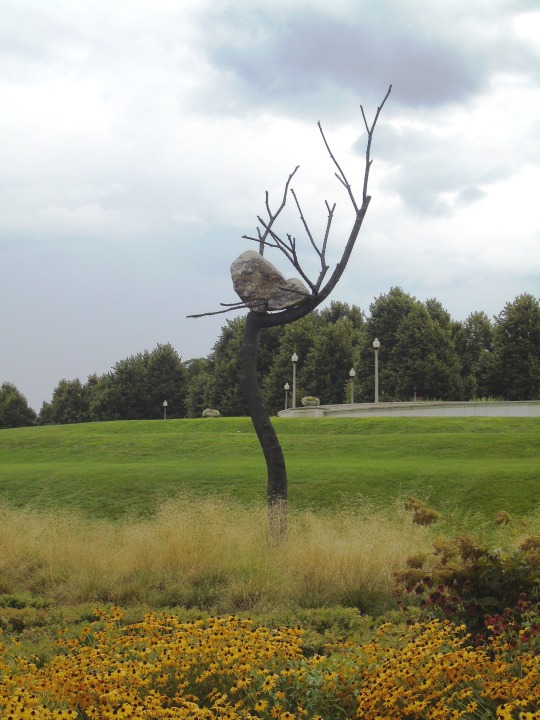
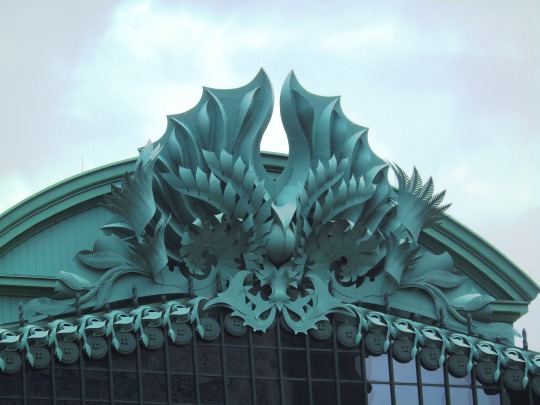
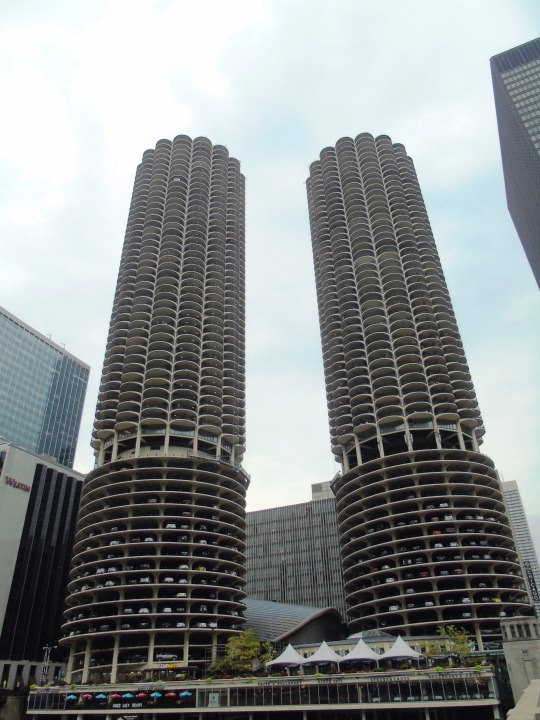

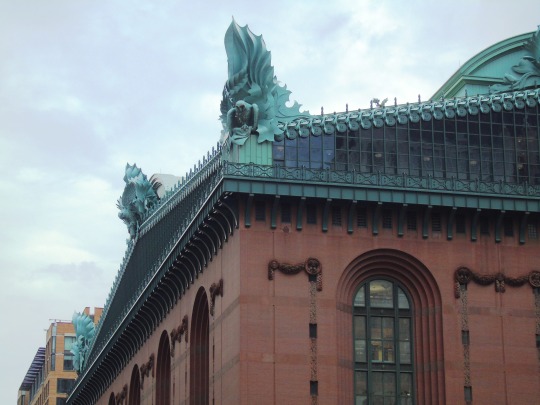
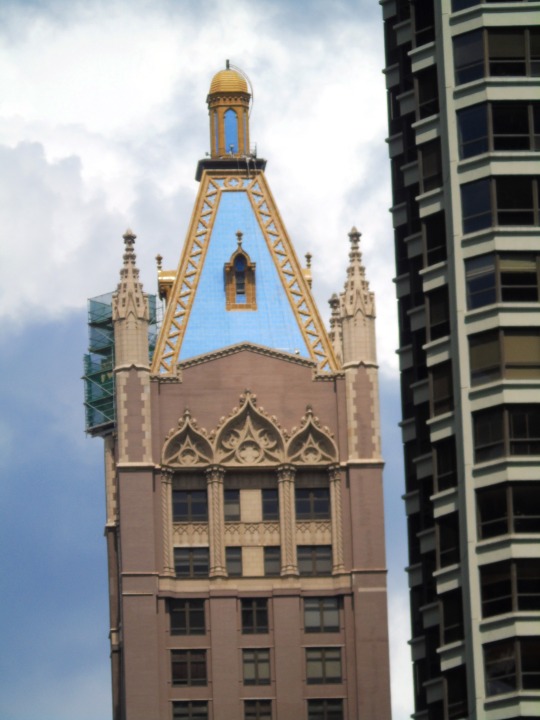
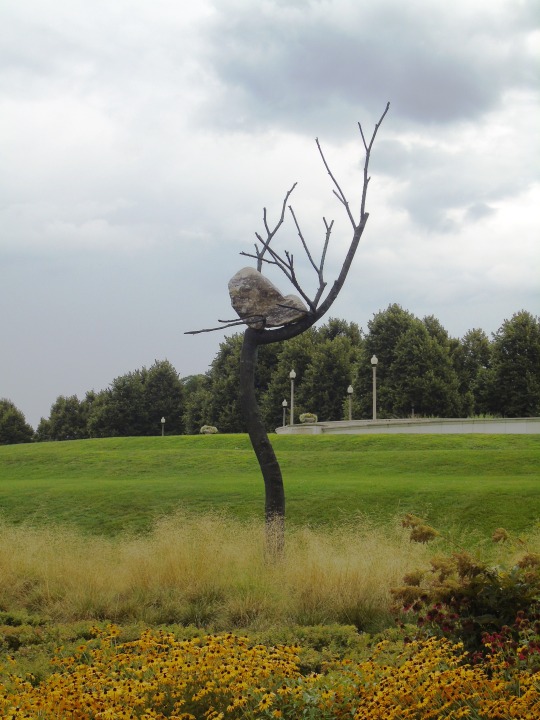
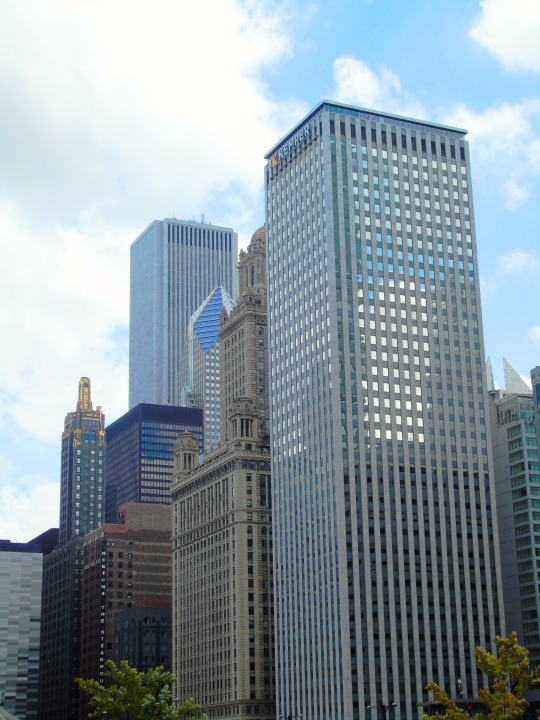


Clouds (No. 788)
Chicago
#Idee di Pietra (Ideas of Stone) by Giuseppe Penone#Museum Campus#travel#Grant Park#Chicago#architecture#cityscape#landmark#tourist attraction#summer 2016#original photography#skyline#skyscraper#Midwestern USA#Great Lakes Region#Harold Washington Library Center#Marina Towers#American Furniture Mart#Carbide & Carbon Building#USA#Illinois
0 notes
Text
Most Famous Landscape Architectures of 2022
Landscape architecture is an important part of the modern world, shaping our environment and giving us a sense of beauty and wonder. In 2022, some of the most famous landscape architects are changing the way we view and interact with nature in new and exciting ways. From sustainable gardens to public parks, these landscape architects have demonstrated that quality design can help shape cities and private spaces alike. In this blog post, we will explore some of the most famous landscape architectures from 2022 who are setting the tone for a greener future.
Central Park, New York City – Frederick Law Olmsted and Calvert Vaux
Frederick Law Olmsted and Calvert Vaux designed Central Park in New York City. The park opened in 1857 and was immediately popular. It is still one of the most visited parks in the United States.
The White House Grounds, Washington D.C. – Andrew Jackson Downing
Andrew Jackson Downing is one of the most famous landscape architects of all time. He designed the White House grounds in Washington D.C., which are some of the most beautiful and well-known gardens in the world.
Downing was born in Newburgh, New York in 1815. He began his career as a nurseryman and horticulturist, and later became a landscape designer. He wrote several books on gardening and landscape design, and his work had a significant influence on the development of American landscape architecture.
The White House grounds were first designed by Pierre Charles L’Enfant, but Downing’s design was significantly different and much more elaborate. He created large winding paths, lush gardens, and fountains that created a peaceful and inviting space for people to enjoy.
The White House grounds are still one of the most popular tourist destinations in Washington D.C., and they continue to be a beautiful example of Downing’s work.
Boston Common, Boston – Frederick Law Olmsted
At the heart of Boston lies one of its first public parks, Boston Common. The 50-acre park was designed by Frederick Law Olmsted in 1857 and is a prime example of his work. The common features winding paths, shady trees, and manicured gardens, making it a perfect place to relax and escape the hustle and bustle of the city.
Capitol Hill, Washington D.C. – Pierre L’Enfant
Pierre L’Enfant was a French-American architect and civil engineer who designed the layout of Washington D.C. He is most famous for his work on Capitol Hill, where he designed the plans for the U.S. Capitol building and the surrounding grounds. His other notable works include the White House, the Smithsonian Institution, and the National Cathedral.
The Getty Center, Los Angeles – Richard Meier
The Getty Center is a world-renowned art museum and research center in Los Angeles, California. Designed by renowned architect Richard Meier, the Center features a striking modernist design with sweeping views of the cityscape. The Center houses an extensive collection of artwork from around the world, as well as a library and archives for scholars. The Getty Center is also home to several gardens, including the Central Garden designed by famed landscape architect Lawrence Halprin.
Villa La Pietra, Italy – Ippolito Pizzetti
Villa La Pietra is a country house in Florence, central Italy. It was formerly the home of the American diplomat Harold Acton and is now owned by New York University. The villa houses NYU’s Florence campus.
Ippolito Pizzetti was an Italian composer, musicologist and essayist. A member of the Generation of 1914, he composed several operas, the best known being Fedra. He also wrote various books on music theory, including Dall’armonia (1922) and Il Canto scelto (1927).
The High Line
The High Line is a public park built on an elevated section of a disused railway line in New York City. The project was conceived by landscape architect James Corner and opened to the public in 2009.
The High Line has been hugely successful, both as a public space and as an example of innovative urban regeneration. The park has won numerous awards and has been visited by over 20 million people.
This was originally from:
https://cornerdwayne.wordpress.com/2023/01/17/most-famous-landscape-architectures-of-2022/
0 notes
Photo
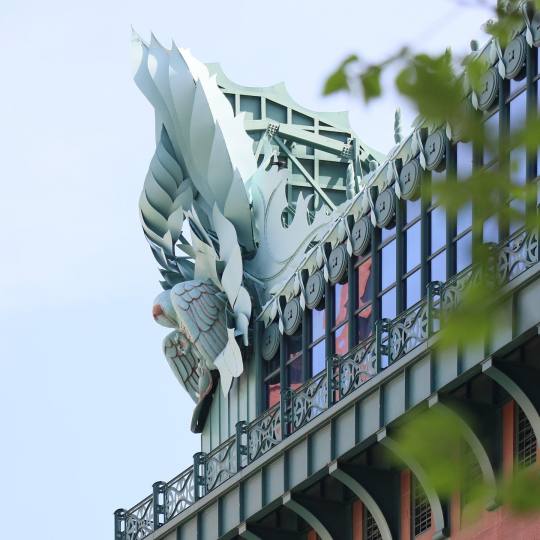
Harold Washington Library Center https://instagr.am/p/CdhKaz6OUL2/
0 notes
Text

4 notes
·
View notes
Text
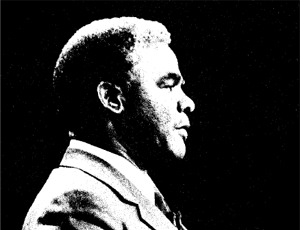
Ever Find Yourself Reminiscing on '88 or if it Was '91 or ... '92 Til Infinity'. Than You Should Take a Trip to The Harold Washington Library Where There are Plenty of Exhibits/Installations Throughout the Building.
Primarily, Located on the 9th Floor is a Permanent Exhibition in the Special Collections Hall of the Harold Washington Library Center.
Exhibition Title: Called to the Challenge : The Legacy of Harold Washington.
• | The Man and the Memory.
#Harold Washington Library Center#Mayor of Chicago#Mayor Harold Washington#Harold Washinton#Exhibition#Special Collections#Art/Work#Art#Installation
0 notes
Note
3, 15, 24
3. 3 songs that mean something to you
the theme from “Who’s The Boss”
“Mine” by Alex Isley
“Gymnopédie” by Erik Satie
15. 3 quotes that have a special place in your life
“How long is forever? Sometimes, just one second.”
“I did then what I knew how to do. Now that I know better, I do better.”
“You are terrifying and strange and beautiful, someone not everyone knows how to love.”
24. 3 places that makes you feel peaceful
Harold Washington Library Center, 7th floor
St. Thomas the Apostle Catholic Church
The swings at my favorite park after the Sun goes down
2 notes
·
View notes
